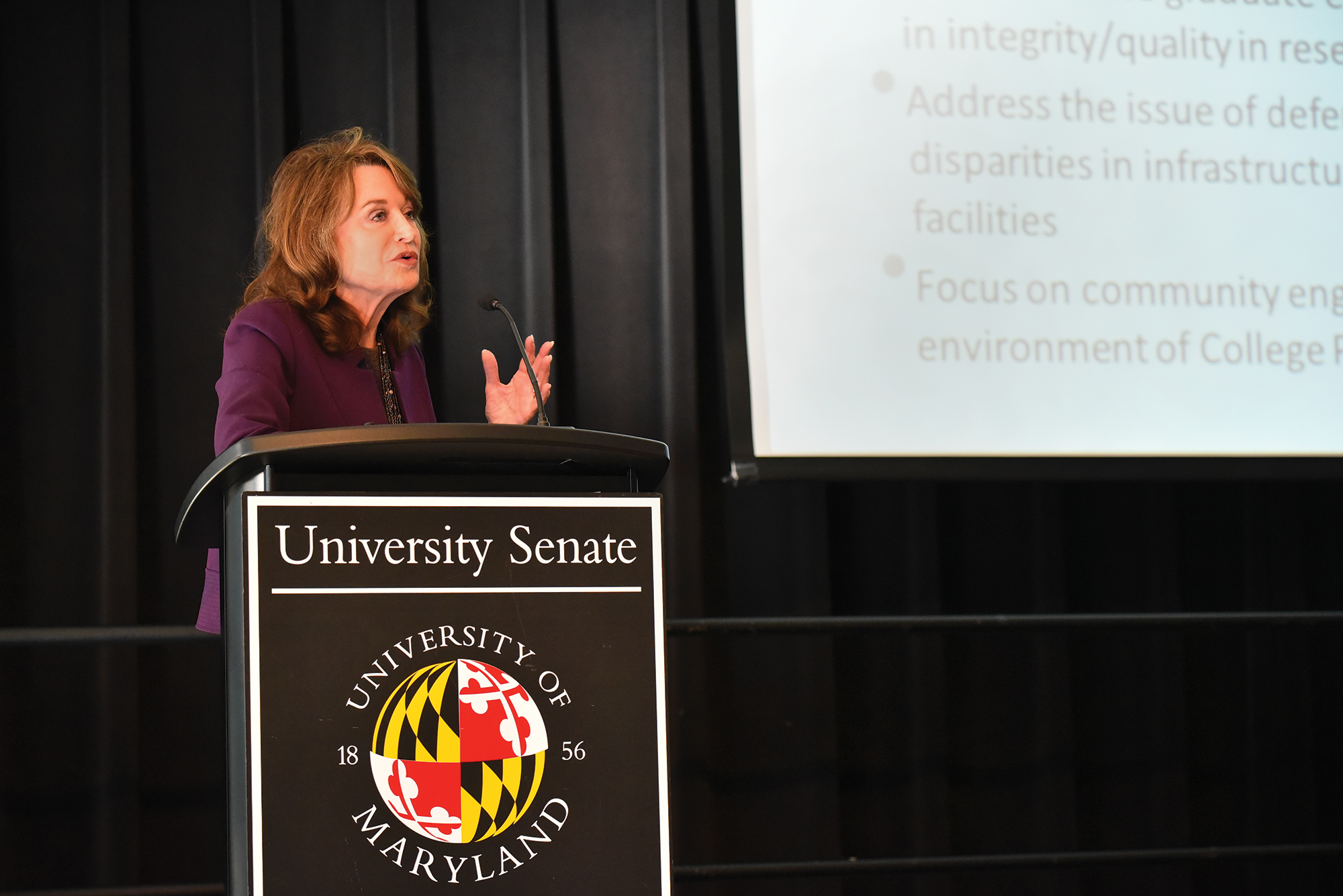University senators asked for more emphasis on the humanities, community engagement and staff members in the draft of the updated Strategic Plan on Feb. 11 at a forum on the document.
Since presenting the draft in December, Provost Mary Ann Rankin’s office has asked for feedback on the 2020 Strategic Plan Update draft, which lists university goals for the next four years and updates the original 10-year strategic plan from 2008.
“It’s very important that the whole campus feels like it’s their plan,” Rankin said.
After two months of gauging reactions, she said, the next draft will include plans for the libraries, more on liberal arts and humanities programs, professional track faculty, research advancement, the role of staff and a completely revamped diversity section.
The plan highlights eight areas of campus life including athletics, which was not mentioned at all in the previous plan, and Greater College Park, which now has more specific details than before.
Though arts and humanities is one of the major themes in the draft, Lindsay Yotsukura, the director of the Japanese program in the languages, literatures and cultures school, said she was worried about how little the humanities were represented at the University Senate meeting when an associate provost took suggestions.
“If we want to be one of the top universities, we definitely need to have the humanities stand out,” Yotsukura said at the meeting. “We need to train students to read and write.”
Richard Klank, a professor in the art department, said he was pleased to see the arts were emphasized, especially considering the university’s new partnership with the Phillips Collection. But he said the plan still falls short.
“I want to encourage us all to maintain the beginnings of art growing; our budget is still undercut and in need,” Klank said. “Let’s be careful not to throw anything away. We need to keep advancing the arts but certainly not at the expense of the humanities.”
Rankin said the update was intended to highlight the large changes the university has seen in the last eight years, including the move to the Big Ten Conference and a partnership with the University of Maryland, Baltimore through the MPower program.
Rankin didn’t include new material for the humanities because she hadn’t received any, she said, but arts and humanities leaders said they are working on putting together a plan for her.
“Folks in humanities are thinking together now about a vision for the future that would be a new direction,” Rankin said. “This is a wonderful outcome of this exercise.”
Others at the meeting pointed out additional areas that need attention. Eric Grims, a production coordinator at the Clarice Smith Performing Arts Center and a College Park resident, said he wanted to see more goals for community connection in the area.
“This is an ideal time to bridge that gap,” Grims said.
Stacey Sickels Locke, the senior director of development and corporate relations for the computer, math and natural sciences college, said the staff members were undervalued throughout the document despite the important role they play on the campus.
For senior bioengineering major Adam Berger, the plan needs to address the decrepit facilities and infrastructure in the future, a focus with which Rankin agreed.
University President Wallace Loh said this plan is really about money and ensuring the university can go forward, but those logistics have “to be driven by a vision,” which is why they are updating it.
“The old plan simply says rise higher,” Loh said. “[In the update] we simply say higher means top 10. … If everybody agrees that’s the vision, that’s the goal, then that affects everything we do: the types of students we recruit, the types of faculty we hire, the kinds of investments we make. It’s all geared toward making this a top-10 research university.”
Senior staff writer Darcy Costello contributed to this report.



